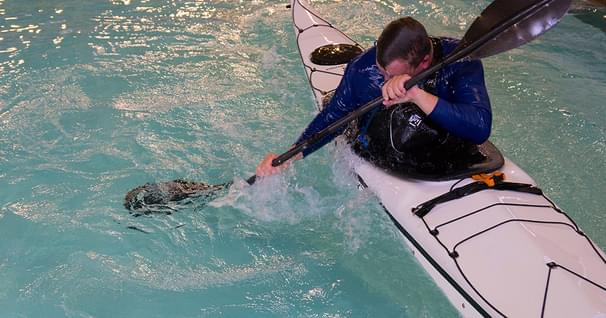Top 9 Tips for SUP
Today, we're going to go over some tips to make standup paddling that much easier. At Werner, we love to make things simple, and how much more simple and fun can you get than stand up paddling. Here is the Werner Paddles Top-9 list for SUP: Getting Started. Why not 10, you ask? Because we want you to be part of this experience and to find out your own number 10, maybe 11, or maybe 12. Falling off you SUP board may seem like a no-brainer, but here are some tips that are going to make it easier for you while you're going through the learning process.
Tip Number 1: Falling is inevitable. Just remember, keep your arms close to your body. Don't try to reach out and grab your board, or else you may potentially end up hurting your elbows, your face, your shoulders, etc.
Number 2; even more importantly than Number 1: When you're coming back up out of the water, make sure to cover your head. You don't want to end up bouncing into your fin or your board. Always protect your head when coming out of the water.
Number 3: Climbing back onto your board can be a challenge, so work your way to the end of the board, let your legs float up to the top of the surface, and then slowly inch your way onto the tail, moving forward to the center of the board. Practice this. The more you practice, the easier it's going to be.
Tip Number 4: Another great thing about SUP is that you lose less gear and you have a better chance of staying dry. On those cooler paddling days, a great tip is to just face your fins out in the deeper water and hop on your board from the front before turning around and setting yourself off.
Stand up paddling is a great full-body work out. Even after just a short session, you can feel it from your shoulders down to your toes. Here are a few tips to help you maximize your fitness. When standing on your board, try to keep all of your weight centered over the instep of your foot. Don't lean too far forward on your toes, don't lean too far back on your heels, as we're trying to prevent cramping and maximize our stability.
Tip Number 6: Along the lines of preventing cramping in your feet, if you do choose to wear foot ware, don't tie everything so tight. Loosen the laces, keep the buckles loose, and make sure to wiggle your toes.
Tip Number 7: When holding your paddle, make sure to keep a loose grip on the shaft and stack your hands, one above the other, so as you enter the water that paddle is going to move right alongside the board, helping you stay in straight line.
Tip Number 8: I recommend that you start your SUP experience on a day with little or no wind. Start on your knees, with your hands choked on your paddle, and once you're comfortable with that, then move onto your feet; kowing that you can always return back to your knees if conditions just warrant it, or you get a little tired.
Tip Number 9: Know the laws on PFDs and make sure you know how to use it. It can add confidence to your overall experience.
Related Articles
By changing how you edge and balance your boat you can increase your stability and adaptability. Using…
Whether you were new to paddling in 2018 or you're an experienced paddler, you can never stop learning.…
Mention “pool session” and the first image that pops into most kayakers minds is a class in how to roll.…
Photo Credit: Darlene Patterson Many people who have paddled for years can't keep a canoe on a straight…



